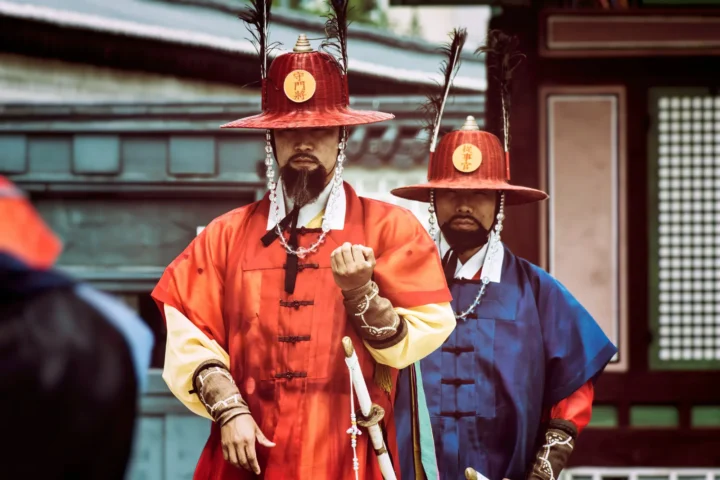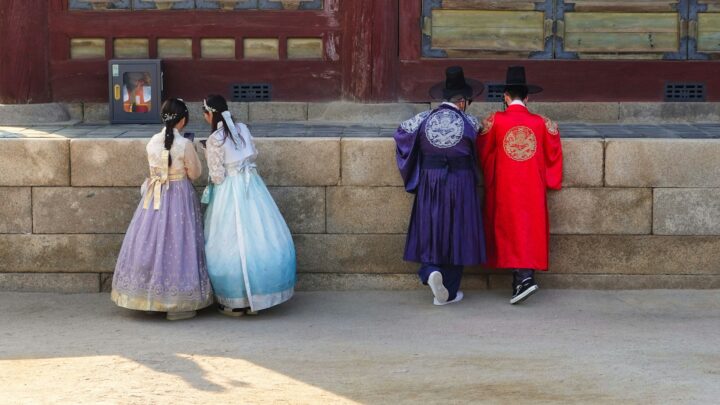South Korea’s wellness culture combines centuries-old traditions with modern relaxation techniques, creating a unique experience for travelers and locals alike. From mineral-rich onsen (hot springs) to lively jjimjilbangs and high-end spas, the country offers diverse ways to unwind and improve your health.
This guide covers the best onsen and spas in South Korea for 2025, including their benefits, etiquette, and top destinations.
What Makes Korean Spa Culture Unique?
Jjimjilbang culture is at the heart of Korean wellness tourism. These large spa complexes work as social spaces where families and friends spend entire days together. Traditional Korean spas offer a complete wellness experience with different types of saunas, hot baths, cold plunges, and body scrubs designed to help detoxify your body and improve circulation.
Unlike Western spas that focus mainly on individual treatments, Korean spas are all about community wellness. These places typically stay open 24 hours a day, so you can experience the full range of Korean wellness practices, from intense heat therapy to relaxing cool-down periods.
The health benefits of Korean spa treatments are well-proven. Regular sauna use helps with better circulation, less stress and tension, detoxification through sweating, relief from muscle pain and stiffness, better breathing, and a stronger immune system response.
Traditional Jjimjilbang Experience
Korean jjimjilbang facilities are the most authentic way to experience Korean spa culture. These wellness centers have separate areas for men and women, where you must remove all clothing before entering the bathing areas. The experience usually includes multiple temperature zones, each serving different wellness purposes.
Modern jjimjilbang facilities have various specialized rooms, including charcoal saunas, clay rooms, salt therapy chambers, jade-heated spaces, and infrared treatment areas. Each room uses specific minerals and materials that provide different health benefits, from skin cleaning to muscle recovery.
The traditional Korean body scrub, called “seshin,” is one of the most popular treatments. Professional attendants use special mitts to scrub away dead skin cells, leaving your skin incredibly smooth and refreshed. This old practice has become popular worldwide for how well it improves skin health and circulation.
Top Onsen and Spas in South Korea for 2025
South Korea offers wellness experiences for every budget, from affordable jjimjilbangs to upscale spa resorts. Below are some of the best spots, based on recent reviews and offerings.
1. Onyang Hot Springs, Asan
Located in Chungcheongnam-do, Onyang Hot Springs has a 600-year history, once favored by Joseon kings. Its alkaline waters, heated to around 134°F, are known to ease arthritis and neuralgia. Visitors can enjoy hinoki open-air baths, dry and wet saunas, and modern spa facilities at places like Onyang Hot Spring Land.
- Why visit: Mineral-rich waters, historical charm, and easy access via Seoul Subway Line 1.
- Cost: Entry starts at ₩10,000 (approx. $7.50 USD).
- Tip: Pair your visit with a trip to the nearby Hyeonchungsa Shrine for a cultural outing.
2. Seorak Waterpia, Sokcho
Set near Seoraksan National Park, Seorak Waterpia combines hot spring relaxation with family-friendly activities. Its sodium bicarbonate-rich waters soothe skin, while the resort offers waterslides, a lazy river, and wave pools. The mountain scenery makes it ideal for a fall or winter getaway.
- Why visit: Blends wellness with outdoor fun, like hiking in Seoraksan’s autumn foliage.
- Cost: Day pass around ₩60,000 (approx. $45 USD).
- Tip: Visit on weekdays for a quieter experience.
3. Spa Land Centum City, Busan
Located in a busy shopping mall, Spa Land Centum City is one of Korea’s most upscale jjimjilbangs. With 22 themed rooms, including charcoal and salt saunas, and outdoor hot springs, it offers a modern twist on traditional relaxation. The rooftop foot bath with city views is a standout feature.
- Why visit: High-end facilities and a convenient Busan location.
- Cost: Entry ranges from ₩12,000–₩18,000 ($9–$13 USD).
- Tip: Try traditional Korean snacks like sikhye or hard-boiled eggs in the dining area.
4. Sulwhasoo Spa, Seoul
For a premium experience, Sulwhasoo Spa in Gangnam provides treatments rooted in Korean herbal medicine. The Intensive Ginseng Journey, a 100-minute facial and back massage, uses red ginseng to relax muscles and improve skin health. The serene setting with natural light only adds to the calming atmosphere.
- Why visit: Ideal for those seeking high-quality, health-focused treatments.
- Cost: Treatments start at ₩100,000 (approx. $75 USD).
- Tip: Book ahead and explore Sulwhasoo’s skincare products after your session.
5. WE Premium Health Resort, Jeju Island
Near Mount Hallasan, WE Premium Health Resort uses volcanic bedrock water for its pools and spas. The Aqua Meditation Pool, kept at 92–99°F, offers a peaceful floating experience, while the Haeam Hydro massage combines water and acupressure for deep relaxation.
- Why visit: Perfect for nature lovers with options like hydrotherapy and forest walks.
- Cost: Varies by package, starting at ₩50,000 (approx. $37 USD).
- Tip: Try the “Sleep & Reset Massage” for better rest after a long day.
Planning Your Korean Spa Experience
First-time visitors should understand Korean spa etiquette before their visit.
Most facilities provide uniforms consisting of shorts and t-shirts for mixed-gender areas, while bathing areas require nudity and are gender-segregated. Visitors should remove their shoes before entering sauna areas and follow specific protocols for different treatment rooms.
Pricing structures vary significantly between facilities. Basic admission grants all-day access to spa facilities, typically ranging from $25-60 depending on location and amenities. Additional services like massages, body scrubs, and specialized treatments require separate fees and advance reservations.
I suggest visiting during weekdays for less crowded experiences. Many facilities offer membership programs with significant discounts for frequent visitors, including free admission after a certain number of visits and birthday specials.
Unique Jjimjilbang Features
Jjimjilbangs offer more than just bathing, with amenities like:
- Themed saunas: Salt, charcoal, or amethyst rooms designed for health benefits like detoxification or stress relief.
- Social spaces: Snack bars, TVs, and lounges for socializing or overnight stays.
- Affordable massages: Body scrubs or chair massages start at ₩9,500 ($7 USD).
How to Pick the Right Spa or Onsen
With so many options, choosing the best wellness experience depends on your preferences.
- For budget travelers: Jjimjilbangs like Siloam Sauna in Seoul offer extensive facilities at low costs.
- For luxury seekers: Spas like Sulwhasoo or Four Seasons Hotel Seoul provide premium treatments with high-quality ingredients.
- For nature lovers: Resorts like WE Premium Health Resort or Seorak Waterpia combine natural settings with wellness.
- For cultural immersion: Visit historic onsen like Onyang or Yuseong for a glimpse of Korea’s heritage.
FAQ: Relaxation and Wellness in South Korea
What is a jjimjilbang?
A jjimjilbang is a Korean bathhouse with hot tubs, saunas, and communal relaxation areas, often open 24/7 for socializing and unwinding.
How much does it cost to visit a spa or onsen in South Korea?
Jjimjilbang entry ranges from ₩7,000–₩20,000 ($5–$15 USD), while luxury spa treatments start at ₩50,000 ($37 USD) and up.
Are Korean spas suitable for first-time visitors?
Yes, Korean spas are suitable for first-time visitors, but learn etiquette, like showering before entering pools and following nudity norms in gender-segregated areas.
What health benefits do onsen offer?
Hot springs can improve blood flow, reduce stress, and help with skin conditions due to their mineral-rich waters.
Can I stay overnight in a jjimjilbang?
Many jjimjilbangs provide sleeping areas with mats or bunk beds, making them a budget-friendly overnight option.
Conclusion
South Korea’s onsen and spas offer a perfect mix of tradition, relaxation, and modern luxury. Whether soaking in the historic Onyang Hot Springs, unwinding at a jjimjilbang like Spa Land Centum City, or indulging in a ginseng-infused treatment at Sulwhasoo, there’s a wellness experience for every traveler. By following etiquette, choosing the right destination, and planning your visit, you can fully enjoy South Korea’s renowned wellness culture.
Sources


